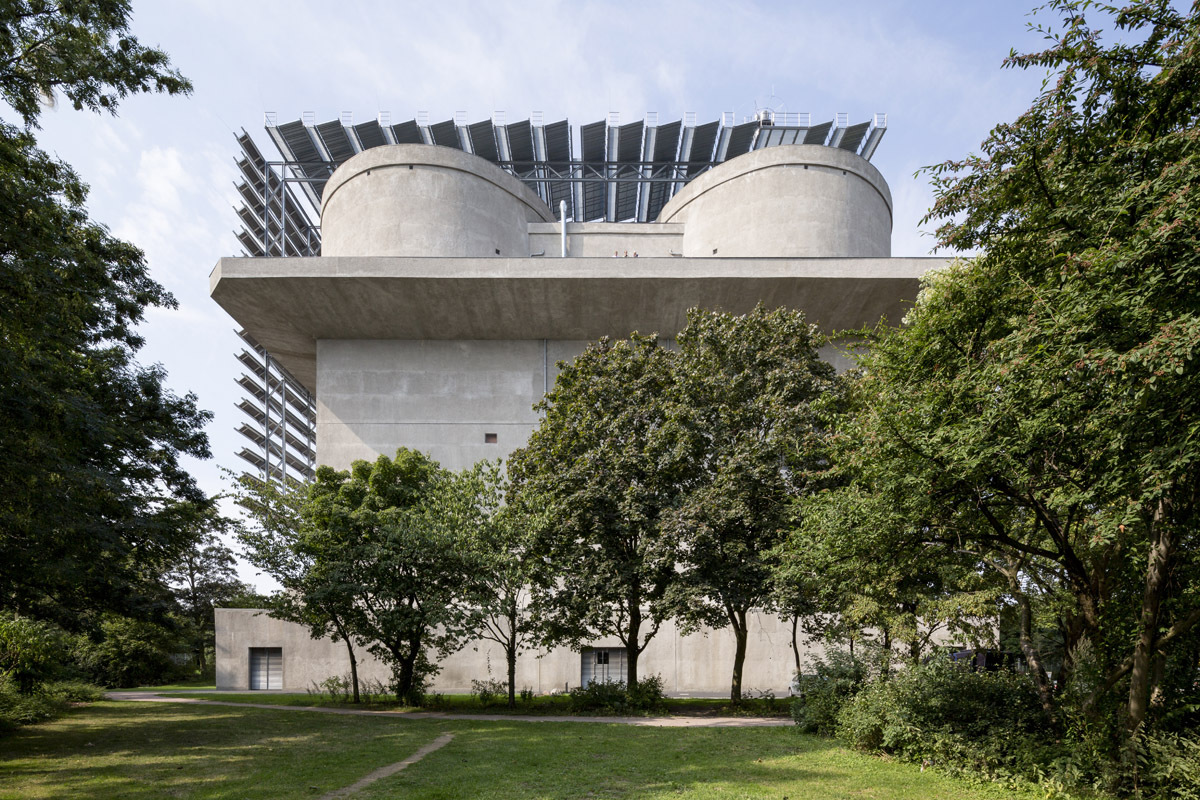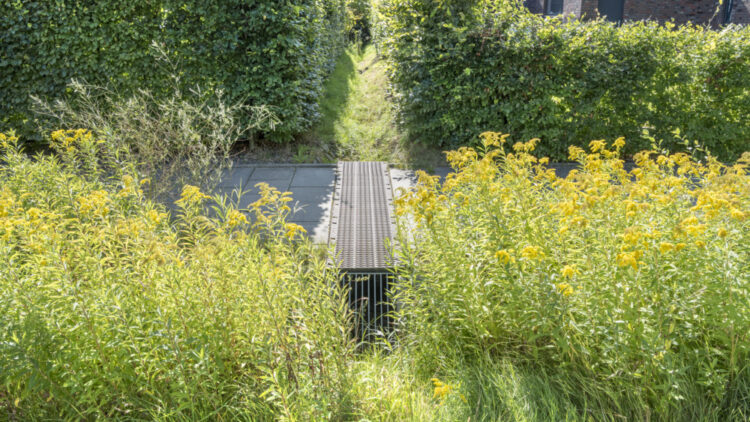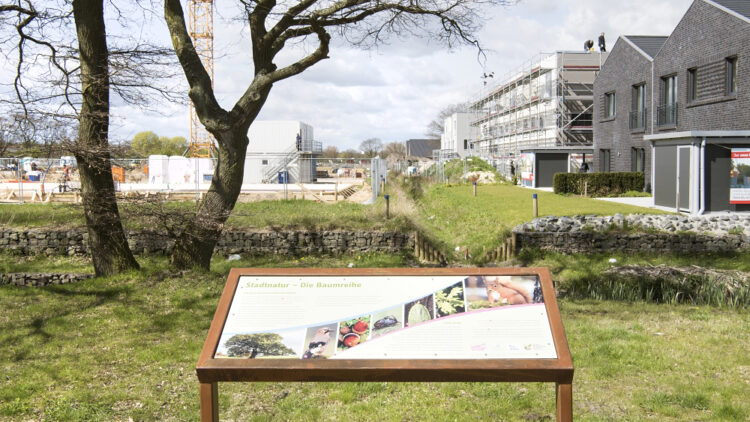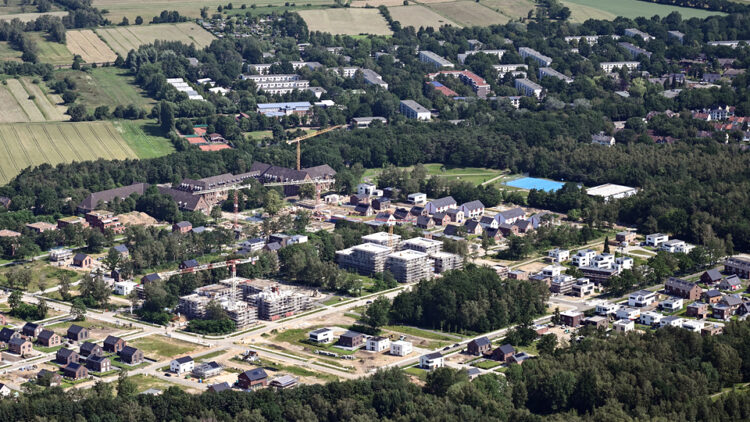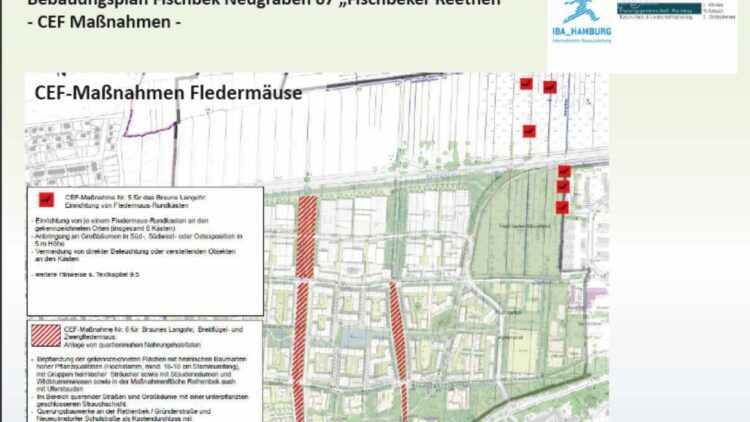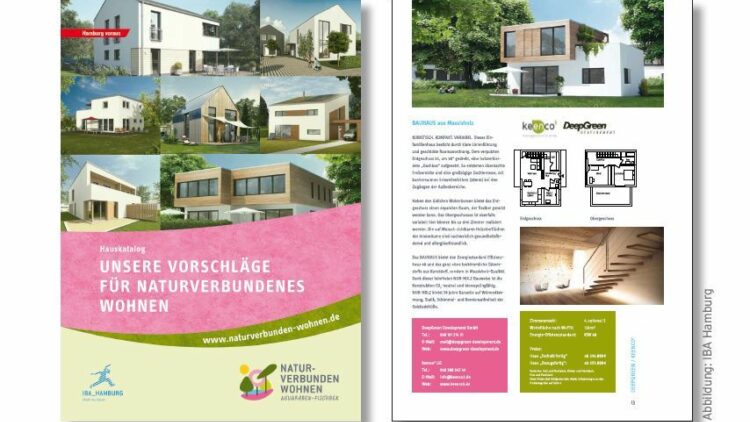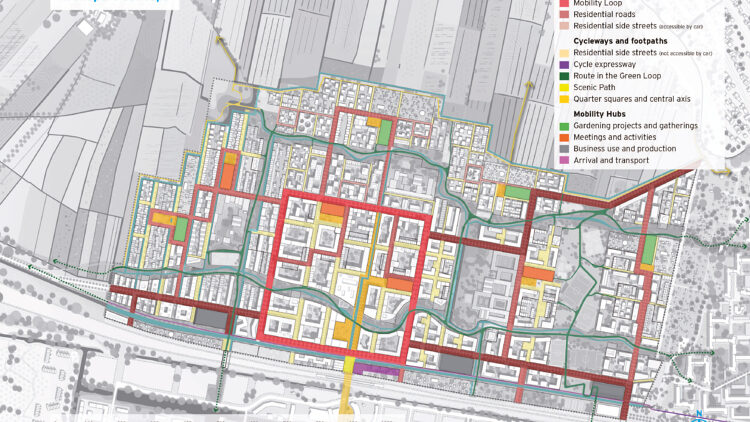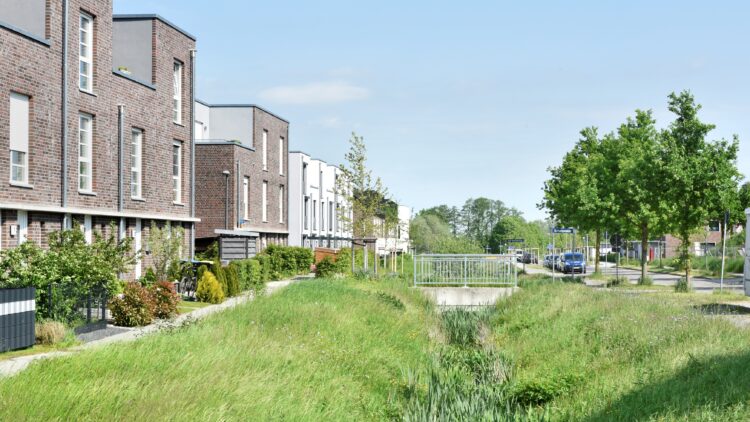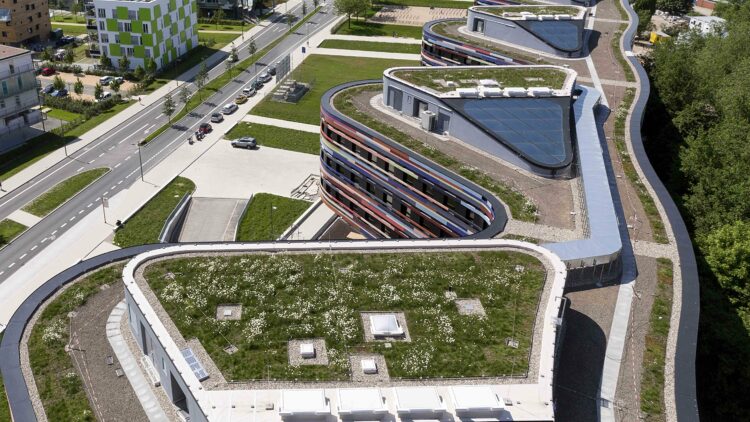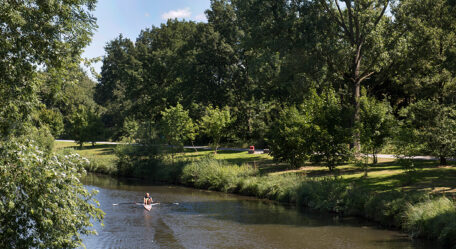Environmental sustainabilityin urban development
Climate and environmental protection are more necessary than ever in view of climate change. The questions of how we can best protect and integrate nature and the environment in the context of neighbourhood development, how the district and its buildings themselves can contribute to climate protection, and what a forward-looking energy supply might look like are fundamental to IBA Hamburg. IBA Hamburg is committed to national climate protection goals and aims to create climate-neutral neighbourhoods. Urban development that takes existing green structures into account, careful sealing of surfaces only to the extent necessary, measures to protect against and deal with heavy rainfall events, a resource-saving energy supply for the new residential areas, and the planning of cold and warm air corridors are just a few examples of how this can be achieved.
In terms of climate change, it is not only climate protection (measures to mitigate climate change) that is relevant, but also climate adaptation (measures to adapt to the consequences of climate change). Solutions were already sought and innovative projects implemented as part of the International Building Exhibition IBA Hamburg 2006-2013 under the motto ‘City in Climate Change’. Building on this foundation, the aim of IBA Hamburg is to make a significant contribution at the neighbourhood level in today's projects as well: responsible, ecologically sustainable use of
Recommended reading
Hamburg's stunning green roofs (German)
38
is the number of nature reserves in Hamburg.
About 62%
of Germany's total electricity production comes from renewable energy sources. (Source: Destatis)
Project RISA
demonstrates a forward-looking approach to rainwater management. Find out more.
IBA DOCK
The headquarters of IBA Hamburg itself is an exhibit for both climate protection and climate adaptation. Thanks to solar thermal energy, photovoltaics and a technically sophisticated system that treats water from the Elbe River for heat supply, the IBA DOCK is self-sufficient in energy and therefore CO2-neutral. At the same time, the floating pontoon works with and not against the water, rising and falling with the tides. This is also a solution for rising water levels. Detailed information about the project can be found here.
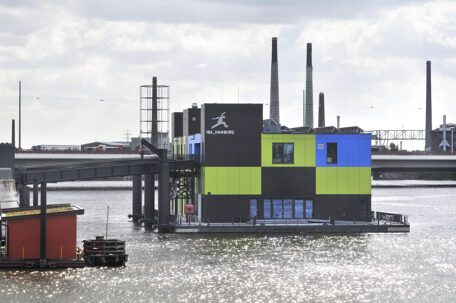
Climate and environmental protection (examples of measures to mitigate climate change)
‘Cities, which account for only three to four per cent of the Earth's land area, consume at least 80 per cent of the world's resources. Efforts to reduce greenhouse gases and switch to renewable energies must therefore be concentrated in cities.’
IBA publication series; Metropolis: Resources
Climate adaptation (examples of measures to adapt to the consequences of climate change)
International Building Exhibition IBA Hamburg 2006 to 2013 – Main theme: Cities in Climate Change
How can growth and sustainability be combined? CITIES IN CLIMATE CHANGE was one of three central themes of the International Building Exhibition IBA Hamburg and was intended to answer the big question of a climate-friendly future for the metropolis. Flagship projects such as the Energy Bunker and the Energy Mountain, as well as innovative ideas such as the BIQ algae house, emerged from this laboratory. Strategies for sustainable energy supply for entire neighbourhoods were also developed. Visit the International Building Exhibition archive to learn more about the projects.
